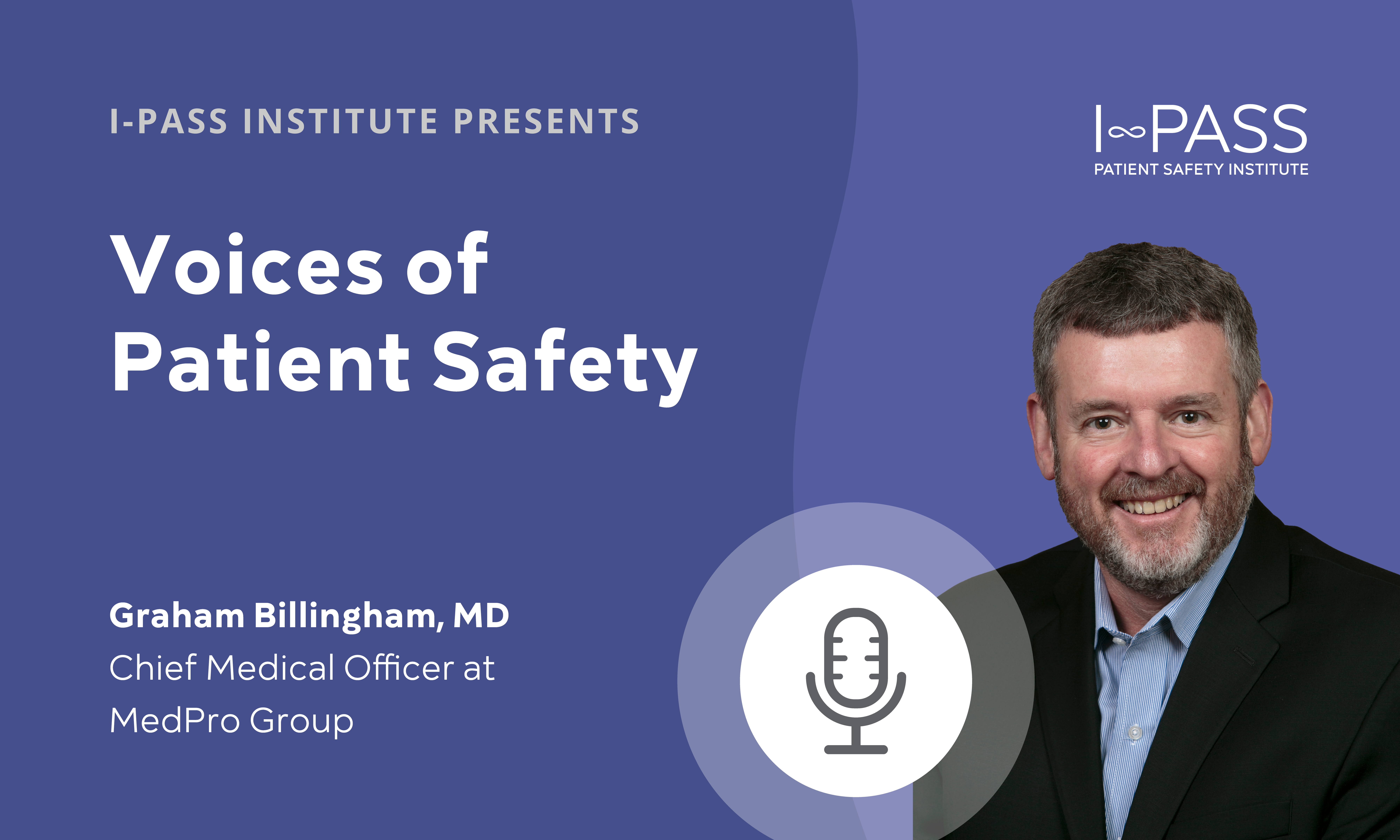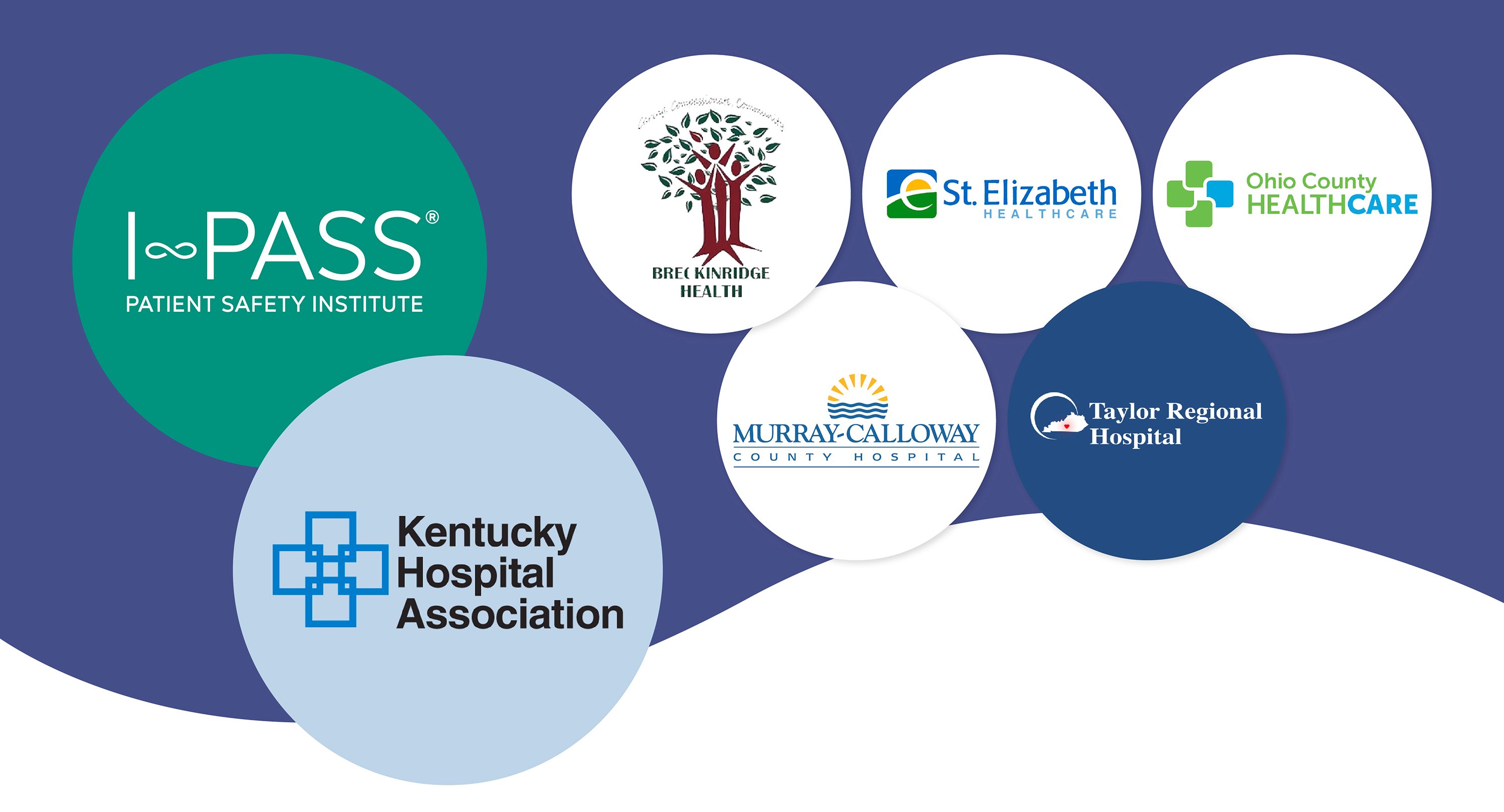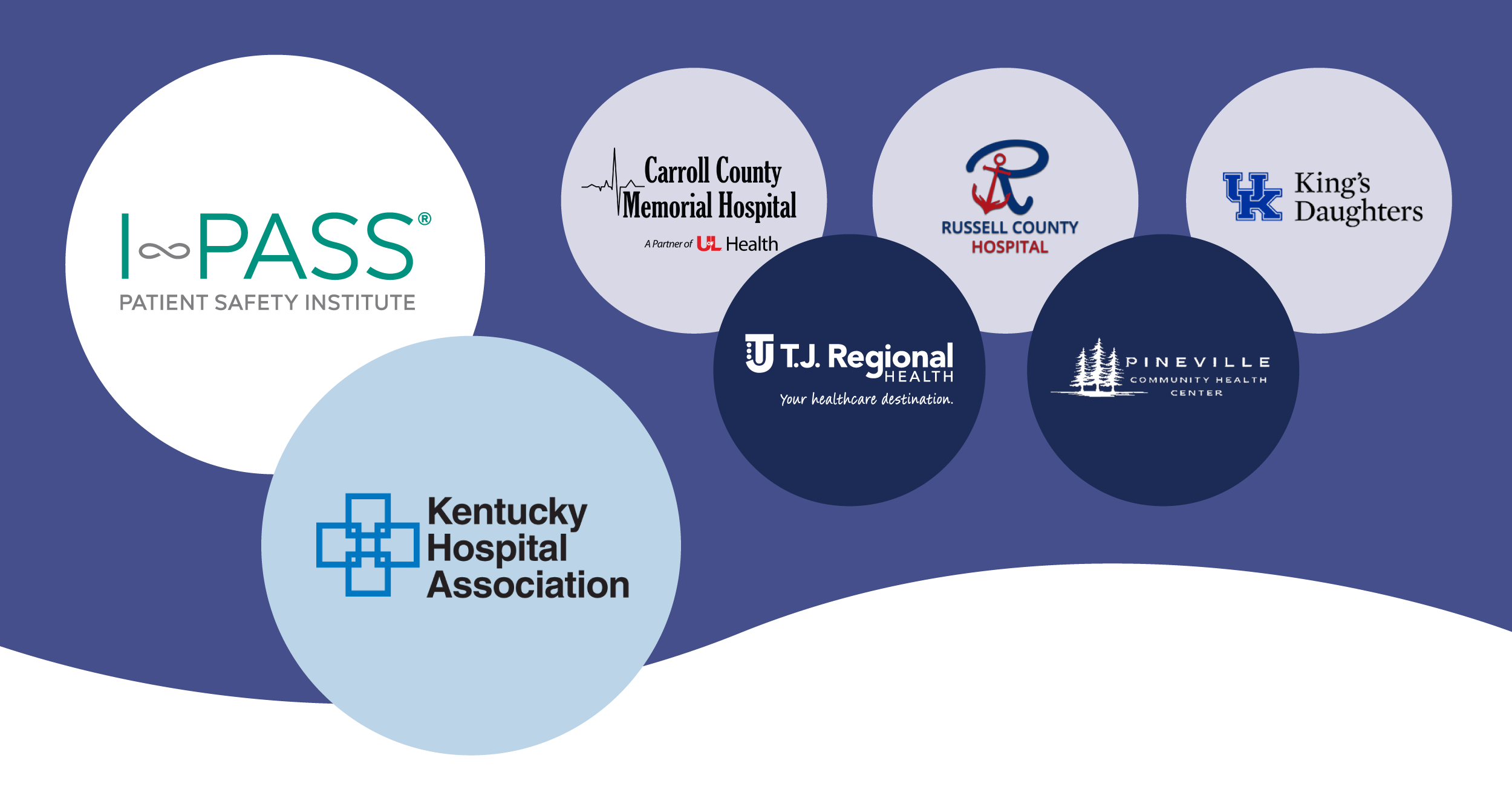For this edition of Voices of Patient Safety, we had a dynamic conversation with Dr. Graham Billingham, Chief Medical Officer at MedPro Group, a leading medical professional liability insurer that recognizes I-PASS as a trusted patient safety and risk management solution. Dr. Billingham spoke extensively about proactively leveraging the signals within malpractice data and the importance of improving communication to positively change cultures within healthcare. We also learned that he took his father’s sage advice to focus on prevention and how he continues to apply this in his career to this day.
Tell us about your professional background.
I majored in biology at Stanford University and then went on to UCLA medical school. During clinical rotations, the Dean advised our class to find something that you really enjoy. I rotated through pediatrics, orthopedics, obstetrics, and more, and I liked it all. When I got to the emergency department (ED), I realized I could do a little bit of everything, and it would never be boring. After my residency, my first job was with EPMG, a West Coast-based emergency medicine group. While there, I was involved in reviewing claims data in emergency medicine, and then trying to distill the 'lessons learned' within them to improve patient safety and risk solutions.
Which examples are most prominent in your memory as you think about forming insights based on the ED claims data which led to an improvement in safety?
During my training in the ED, we missed myocardial infarctions a lot, which had detrimental consequences for the patient and significant liability in terms of medical malpractice. Later in my career, in our small risk retention group, I noticed that we weren't missing elderly males who had a history of smoking, hypertension, or diabetes; we were missing young females between the ages of 35 and 55. They came in with a chief complaint of chest pain, and the physicians thought that a 40-year-old mother can't possibly have cardiac chest pain. Instead, the patients were told it may be dyspepsia or anxiety.
I reviewed the records of eight women and found that every single one of them had cardiac risk factors, but they only got one EKG then were sent home. To address this issue, we put together a structured bundle for treating chest pain. Based on the science, physicians needed to do more than one EKG and serial enzyme testing. If those were both negative, then the physician had to ensure that the patient would get a stress test. We called this a cardiac bundle, which was a structured approach to one specific chief complaint.
How did your experience as an ED provider prepare you to lead efforts on advancing patient safety and risk management solutions for the nation’s largest medical professional liability firm (MedPro Group)?
In a busy ED, there’s 90 chief complaints ranging from shortness of breath to abdominal pain, but about ten of them are quite serious and very high risk for the patient and the clinician. Since medical malpractice is repetitive, you tend to see the same types of medical errors occurring. This led me on a path to observe that patient safety concerns are repetitive as well, and therefore, we should be able to predict and prevent them. My father was a physician who worked for NASA, and when I was growing up, he always told me that prevention is where you should focus all your energy, and as it turns out, I've followed in his footsteps.
After 14 years in the medical group, some insurance folks approached me to help start a risk retention group called EPIC. St. Paul had just discontinued malpractice insurance coverage, so we started our own insurance company which I ended up leading as the CEO. That's how I met and started working with the folks at MedPro Group, and this is my 13th year there as Chief Medical Officer.
As CMO at MedPro, what are your main areas of focus?
We have a team of 51 folks dedicated to bending the medical malpractice curve, which means pushing down the loss curve in terms of medical malpractice. Prevention—see, I said it again—is our primary focus. We look at the frequency and severity of claims, what's driving the severity of those claims, and which contributing factors lead to repetitive claims. Then, we develop risk solutions and distribute them through a variety of methods. We have tons of resource materials available and provide education, webinars, online and in-person trainings, as well as experienced consultants that go into medical practices or hospitals and sit with the providers to figure out safer ways to deliver care.
What’s your perspective on using malpractice data to identify vulnerabilities that often lead to malpractice claims?
You can't have enough. I say that facetiously, but it would be one thing if I stood in front of you and said I've been doing this for 40 years and I can tell you about the 500 missed myocardial infarctions in an ED. If instead I talk to you about the 10,000 missed myocardial infarctions, then I have a lot more credibility. At MedPro Group, we have worked with CRICO, and now Candello, to help us better dial into the root causes of malpractice claims. We're fortunate that we're large and have lots of our own data to look at, but when we collaborate, the data is even larger, richer, and more credible, which helps us better target the highest leverage areas for improvement, like handoff communication.
How can providers and health systems use malpractice data to proactively improve patient care and prevent risk?
I would describe malpractice data as a compass because it points the leadership in medical groups, hospitals, and institutions on where to focus their efforts. We don't have enough time and resources to boil the ocean and attack 180 problems, so if you can nail it down to three or four, you're much more likely to be successful.
Where do communication-related care transition errors rank in malpractice claims?
In our data, it’s number two right after clinical judgment, so it's a great area for us to focus on.
How does care transition communication play a role in care quality and patient safety?
It’s a critical piece of the problem. Within our MedPro Group claims experience, communication errors contribute to 44% of medical malpractice. That's what our data says, but I'm going to say it's more like 100% of every medical malpractice claim or patient safety event. Whether it was physician to physician communication, nurse to physician, or physician to family, there is always the possibility that we probably could have more reliably communicated something better somewhere along the line. You don’t get sued for having an unexpected outcome; people know we’re not perfect and we're going to make mistakes. But you do get sued for an unexpected outcome and a patient or family that is upset because the outcome was preventable. Preventable errors like communication breakdowns are the types of errors that are difficult to defend. Better structured communication tools and bundled implementation methodologies with strong evidence allow us to target the second largest issue in medical malpractice.
How do you think structured communication addresses this?
George Bernard Shaw said one of the greatest quotes I’ve heard about communication, “The single biggest problem in communication is the 'illusion that it has taken place'.” When you say structured communication, there needs to be a process, and you have to provide training and support with tools. It's an all-encompassing formula. In a busy hospital, it’s not good enough to point out the problem and give somebody a checklist or to hang a poster on the wall. It’s about changing the culture and the environment around you to ensure that communication is taking place – and this includes changing the local, micro culture of how caregivers communicate, as well as the larger organizational culture and environment.
How did you first learn about I-PASS?
We work very closely with Candello in terms of data sharing, and their leadership introduced us to I-PASS. From there, we started having conversations with the I-PASS team and decided we’d mutually benefit from working together to tackle a problem that we all – caregivers, patients, and families – encounter daily in the healthcare industry.
What is different about I-PASS compared to other communication or patient safety initiatives?
One of the critical differentiators was that they've been doing this for a long time, and they have a lot of published peer reviewed literature. That's proof of concept. Most of the companies that we see are in startup mode, and they don't have 15 years’ worth of literature. Plus, I-PASS is a methodology that is applicable across a wide variety of issues, institutions, and practices that we insure.
What benefits does I-PASS offer to MedPro and your clients?
When we share malpractice claims data with our clients, it's also imperative that we share solutions. We know that our members have more than enough on their plates – and they want partnership and assistance in implementing interventions. They need a comprehensive solution that recognizes the various cultural, environmental, and socio-technical factors involved in the recipe for reliable communication. I-PASS is a solution that through education, resources, and tools helps to decrease risk for providers and institutions, but also helps to improve patient safety and outcomes. That’s the magic formula.
Tell us about patient safety initiatives you’re currently championing or organizations you’re involved in.
On a regular basis, we look at different types of risk solutions. We're currently evaluating one that uses a tool to decrease diagnostic errors. We also work with many associations including the Medical Professional Liability Association and the American Society for Healthcare Risk Management Society. We do a lot of public speaking and engagement with associations to promote patient safety, and again, we also work with Candello on using data to study risk.
What are you currently reading or what podcast do you listen to?
I read so much clinical stuff that when I read for pleasure, I’m a Lord of the Rings and Tolkien guy. I’m currently reading The Stormlight Archive series by Brandon Sanderson, which is fantasy-science fiction. I don't listen to many podcasts, but when I do, they're definitely not healthcare related. I love to backpack and fly fish, so I've listened to a few webinars on different fly-fishing techniques.
Is there any wisdom you can leave us with?
My mantra is to look for opportunities where one plus one can equal three, and I don't say that lightly. I’m 64, and every single day that I get up, I get to work with a very smart, resourceful, and passionate group of people who focus on improving patient safety and outcomes and decreasing risk by preventing claims and medical errors before they happen. In that scenario, one plus one equals three because the patient wins, the clinician wins, and the insurance company wins. That's a job worth getting up for in the morning.





